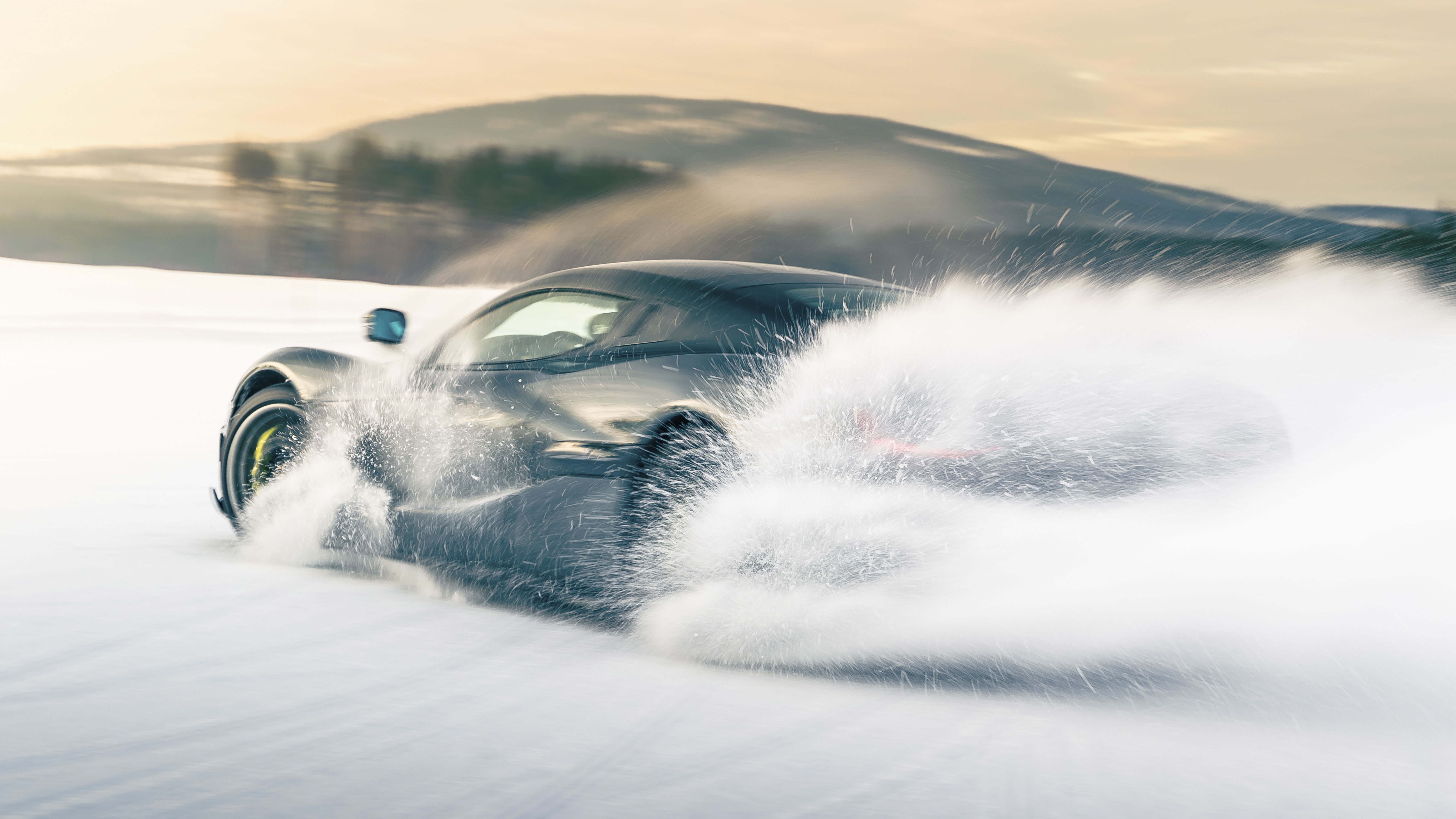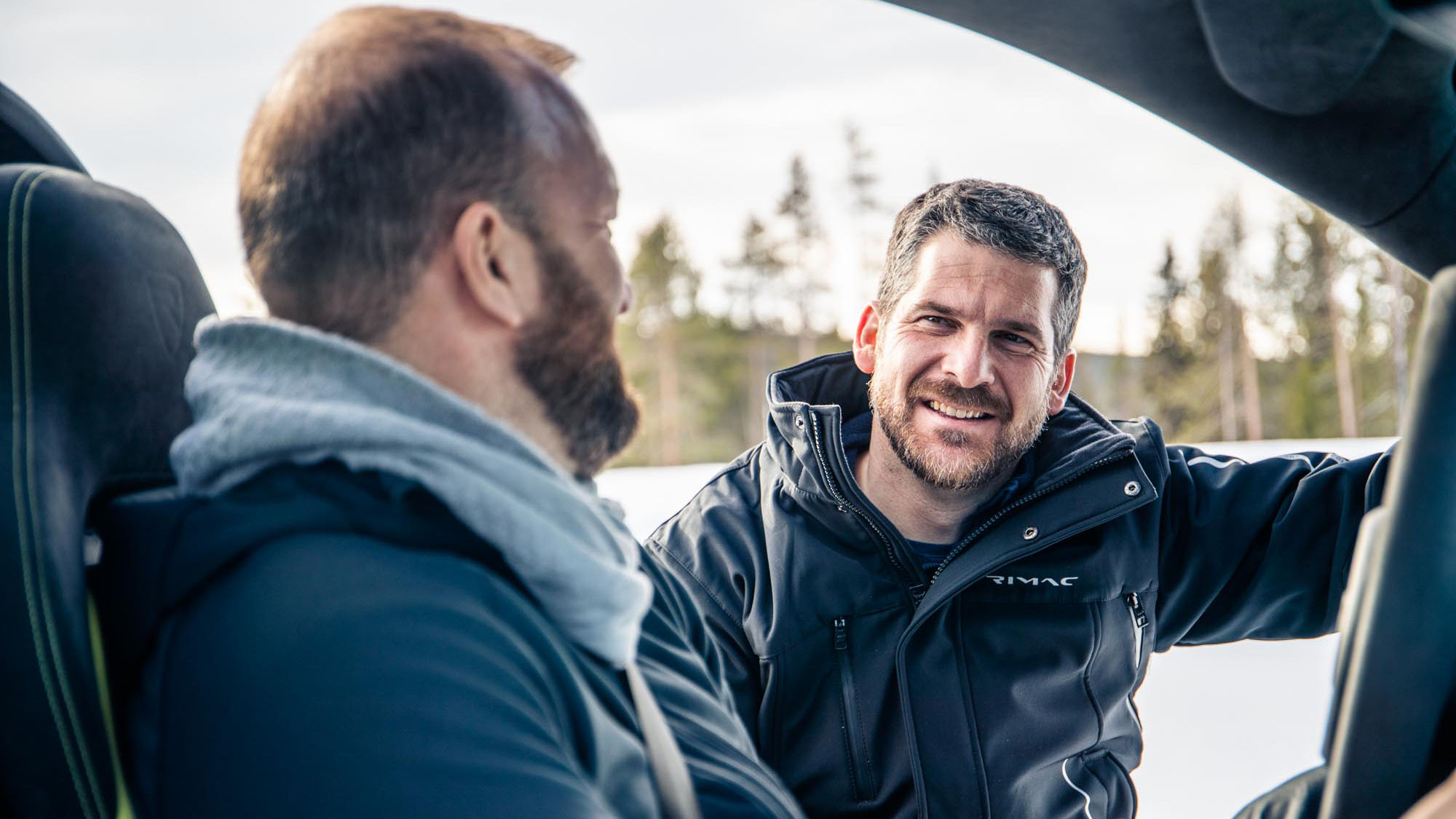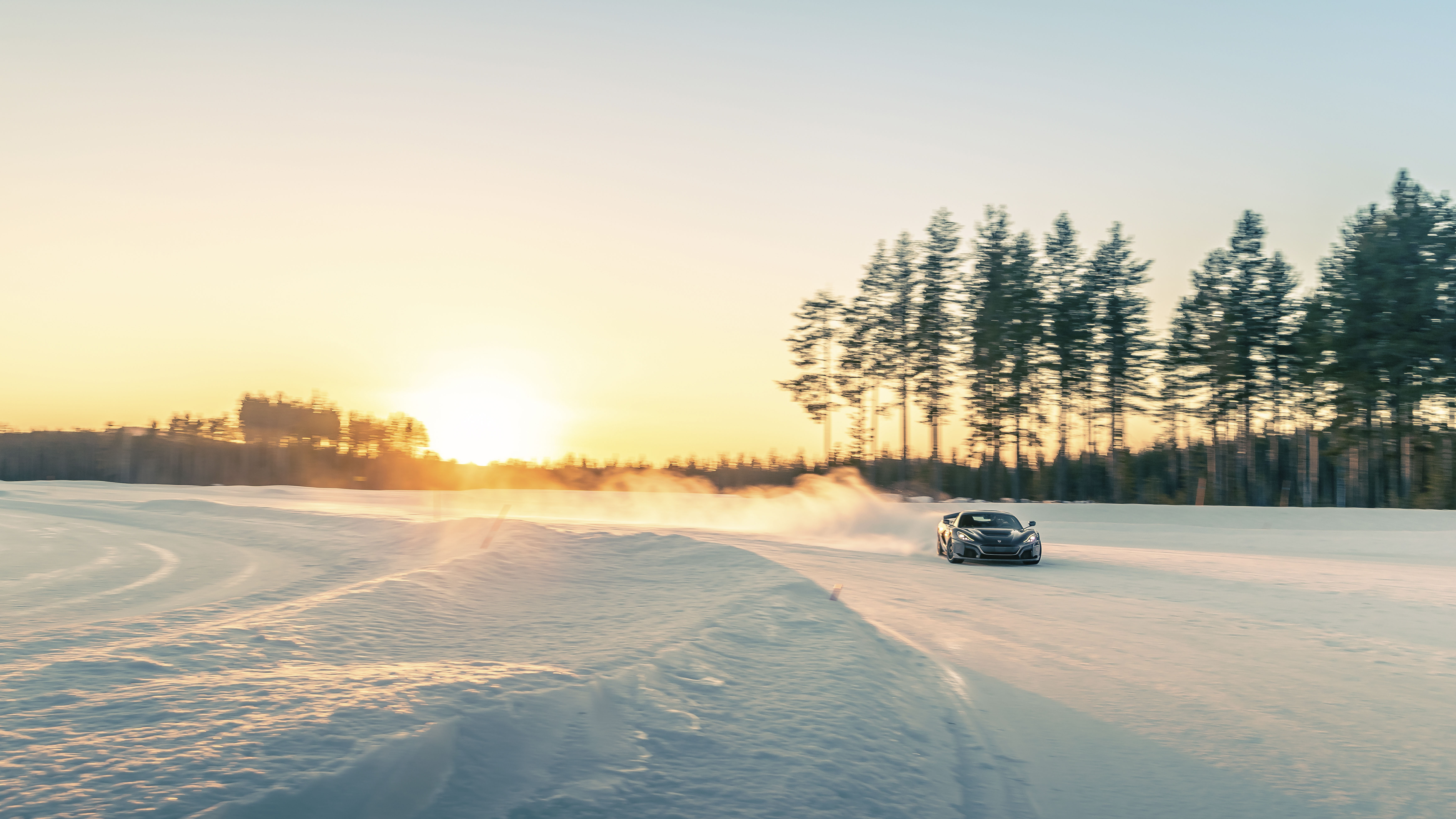
Flat out on ice in the wild Rimac Nevera
When you need to test your £2m, 1,888bhp EV hypercar in the Arctic Circle, who you gonna call? Not Top Gear...
Absolutely spectacular donuts. That’s the only thing I can think as the Rimac Nevera’s nigh-on 1,900bhp, desperately advanced four-wheel drive and torque-vectoring systems are deployed in absolutely the least intelligent way possible. The windscreen becomes a blur of white, the Nevera whirrs around its own front axle like a propellor, and my stomach starts to wrap unkindly around my spine. A lift, a wriggle of the steering wheel and the horizon snaps straight on hard reset. Absolutely spectacular.
Probably not the feedback that the engineering team at Rimac was hoping for, given that we’ve travelled all the way up to the Arctic Circle to drive the pure electric Nevera, but that’s what you get when you don’t set proper boundaries. And surprisingly, Rimac didn’t really set... any. Just head on up to the far north of Sweden to join Rimac’s drivetrain and software gurus while they finalise systems on the Nevera during cold weather testing. Find out what it’s like to drive one of the world’s most powerful production cars on ice, without studded tyres. Spoiling the ending of the story somewhat: it’s really good fun.
The numbers are not subtle; 1,888bhp, one thousand seven hundred and forty one pounds feet of instant-on electric torque. On a normal surface, it’ll hit 62mph in 1.97 seconds (albeit with an American one-foot roll-out), run the quarter mile in 8.58 seconds. Top speed is a couple of mph shy of 260. There are four electric motors, four gearboxes, and enough sensors and systems to render the car at least potentially AI conscious, including 13 cameras (one for facial recognition in lieu of a key, although it does also have a key), six radar sensors and 12 ultrasonics.
Photography: Jonny Fleetwood
But the numbers feel a bit bloodless on their own. To put them into some sort of context, the front motors deliver something like 295bhp (220kW), with two single-speed gearboxes strung out on either end of the front axle. The rear motors sit either side of another pair of gearboxes – this time in a single housing in the middle of the back axle – potentially pushing out 645bhp (480kW). Each. That’s a Bentley Continental GT Speed per rear wheel, and a pair of Audi S3s up front. Each wheel gets its own inverter – the control unit that converts DC (battery) to AC (motor) current – and there are five cooling systems. Because batteries can get sweaty.
The car itself is a chunky carbon monocoque with huge carbon butterfly doors, a bonded carbon roof and carbon rear subframe, itself integrated with a structural, liquid cooled 120kWh battery pack that sits in the middle in a kind of squished double-ended T shape, one end of which, toward the rear, is a bit more bulbous than the other. Pretty much everything is carbon, and despite that huge battery pack, the Nevera weighs in at under 2,200kg. Again, for context, a similarly four-wheel-drive Bugatti Chiron weighs just under 2,000kg and produces in the region of 1,479bhp. So roughly 10 per cent more weight, with getting on for a third more power. The Nevera is not to be taken lightly.
But it is also not 100 per cent finished. This is a late model prototype, undergoing dynamic polishing before customers start to receive one of the 150 units that are planned for production. The crafting and perfection of low-friction handling characteristics, the synchronisation of Pirelli winter tyres and electronic stability control, the final filigree of steering feel and expression. And that’s why the Nevera is here, up in car testing central by the Arctic Circle, being pounded around ice tracks by a small team of dedicated engineers. And Top Gear.
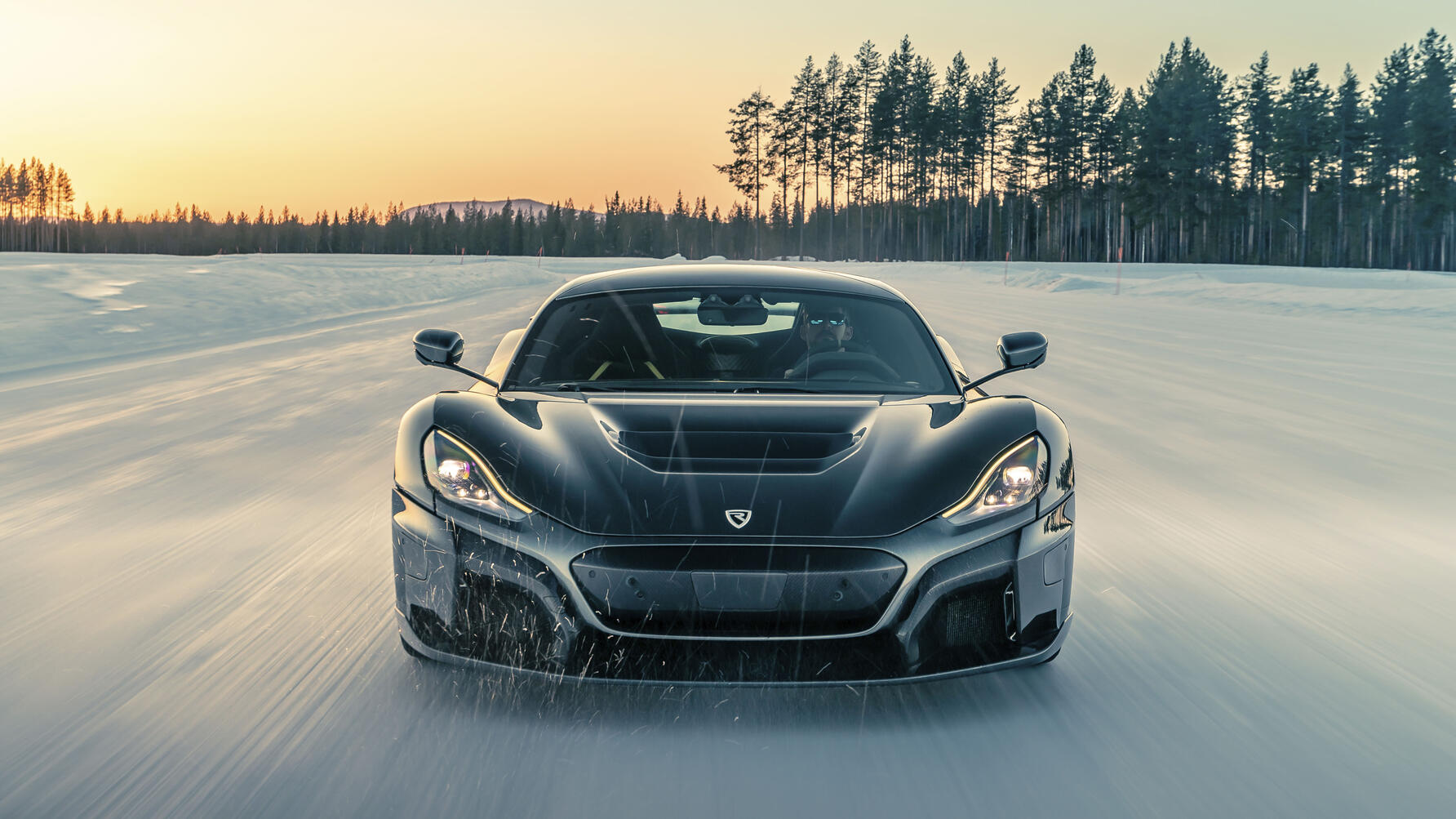
Of course, the Nevera could have a quarter, an eighth of the horsepower and still be able to break traction on this surface. There is no mystery to a lack of grip, but mastery can be fettled; chinks in the car’s dynamic armour are laid bare at 40mph rather than 140, and subtleties are easier for the human mind to process when not overwhelmed with adrenaline. Although there’s still quite a lot of adrenaline to be had. It’s unseasonably warm, the usual ice is melting (there’s probably some terrible irony in driving an electric hypercar on ice that’s usually more persistent), and nothing about the terrain seems
to want to help. One pass of the car renders the surface more polished than the chrome on an American classic, and at one point, I drive over an air bubble in the ice, hear a massive cracking sound, and the entire rear of the car drops through the top seven inches of surface to rest, nerve-rackingly, on the carbon fibre rear diffuser. A quick flick through the modes to give more torque to the front axle, full lock right and a slither of traction in reverse saw the front end pivot the rear around itself 180°, and I drove back out of the trench – but we were inches from expensive fixes.
The modes are necessary in a car with this much breadth of dynamic character, mind – you can literally make it do whatever you want; 100 per cent front- or rear-wheel drive, any combination of the two. Stick one side on sheet ice and the other on tarmac and it would instantly juggle torque to the side with grip using what’s called R-AWTV (Rimac All Wheel Torque Vectoring) – and it doesn’t miss. This thing could only have traction with half a front wheel, and it would move. On shining, glass-clear sheet ice, it will pull away on winter tyres without studs. Slowly, yes. With a creeping softness. But the traction systems are almost psychic. Other anti-slip systems are reactive, catching wheels after half a wheel of rotation; these feel almost pre-emptive. A fact borne out when you switch the systems off – the car simply sits still, accompanied by the static fizz of all four tyres spinning uselessly at roughly 100+mph of wheel speed. They are necessary to make this much torque (the power is nice, but it’s the torque which puts the strain on your neck) handle within the limits of human frailty. Without, the Nevera would likely be smeared up the nearest solid object within a matter of minutes no matter how handy you think you are.
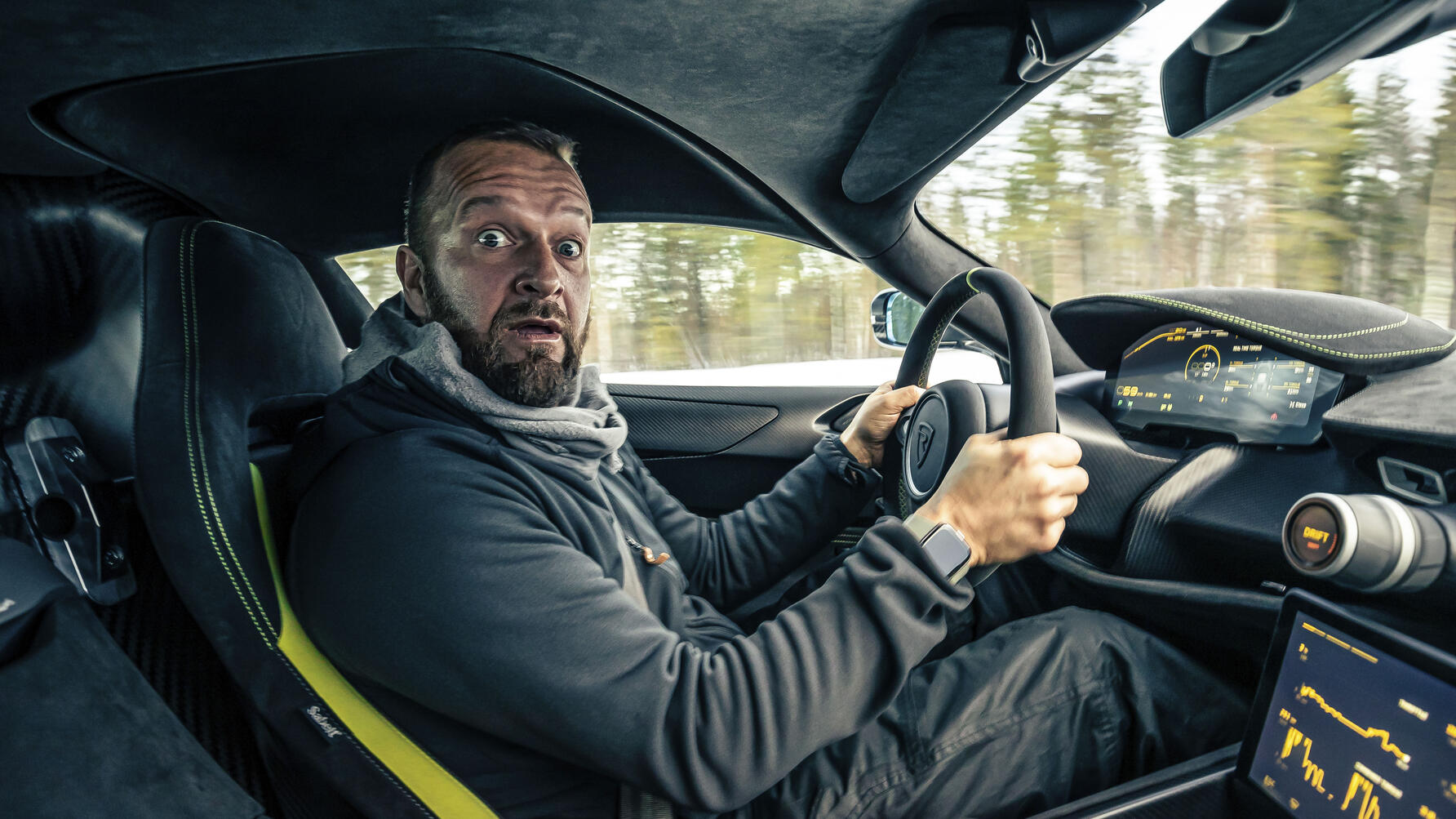
The modes are accessed via the rotary control on the dash, of which you can decide from Range, Cruise, Track, Drift and a pair of Individual modes that allow you to preset favourite composite set-ups. All pretty much as you might imagine, changing the torque split front to back, throttle map, suspension settings and active aero. Make that hyperactive aero, given that the front air dam, Venturis and rear wing all cycle through various planes depending on which mode is active. Track is the most useful on this surface, given that it maintains more drive to the front axle, but Drift mode is more fun. Obviously. In Drift mode, the Nevera essentially acts as a rear-wheel-drive car with a locked rear differential and not enough steering angle. It would be fine on a surface with anything resembling friction, but by the time you’ve reached the limit on ice, backing off doesn’t help suck the back end back into line and the front end – which still retains a little bit of drive – hasn’t got any traction to offer either. I span this car embarrassingly often, repeatedly pirouetting and pretending I meant to do it. Look casual and all that.
The fun was in learning something new. In a normal car you might stab the throttle to break traction, then reapply power to keep the wheels spinning and the drift at the desired angle. In an electric car with this much torque, you gun it, and try and hold the right throttle position. It requires you to be – weirdly – more precise in your input. And the lack of feedback from the engine means you’re hyper aware of your actions. You drive with concentrated smoothness, rather than the sometimes casual brutality of combustion. Get it on a surface with friction and it bolts like a stabbed rat, flicking the world away from underneath it almost casually. It feels lighter and smaller than it is, tighter and brighter than it looks. It drives more naturally and fluidly than the dense electric specification would lead you to believe. At the moment, the brake feel needs some attention, the ESC teetering on the edge of greatness, but a touch overenthusiastic on roads that feel like greasy Teflon. There are torque splits to be finalised, tweaks to be made. The car’s R-AWTV may be able to adjust torque individually between each wheel 100 times a second, but it still needs a warm, emotional human to coax it into being and make it feel.
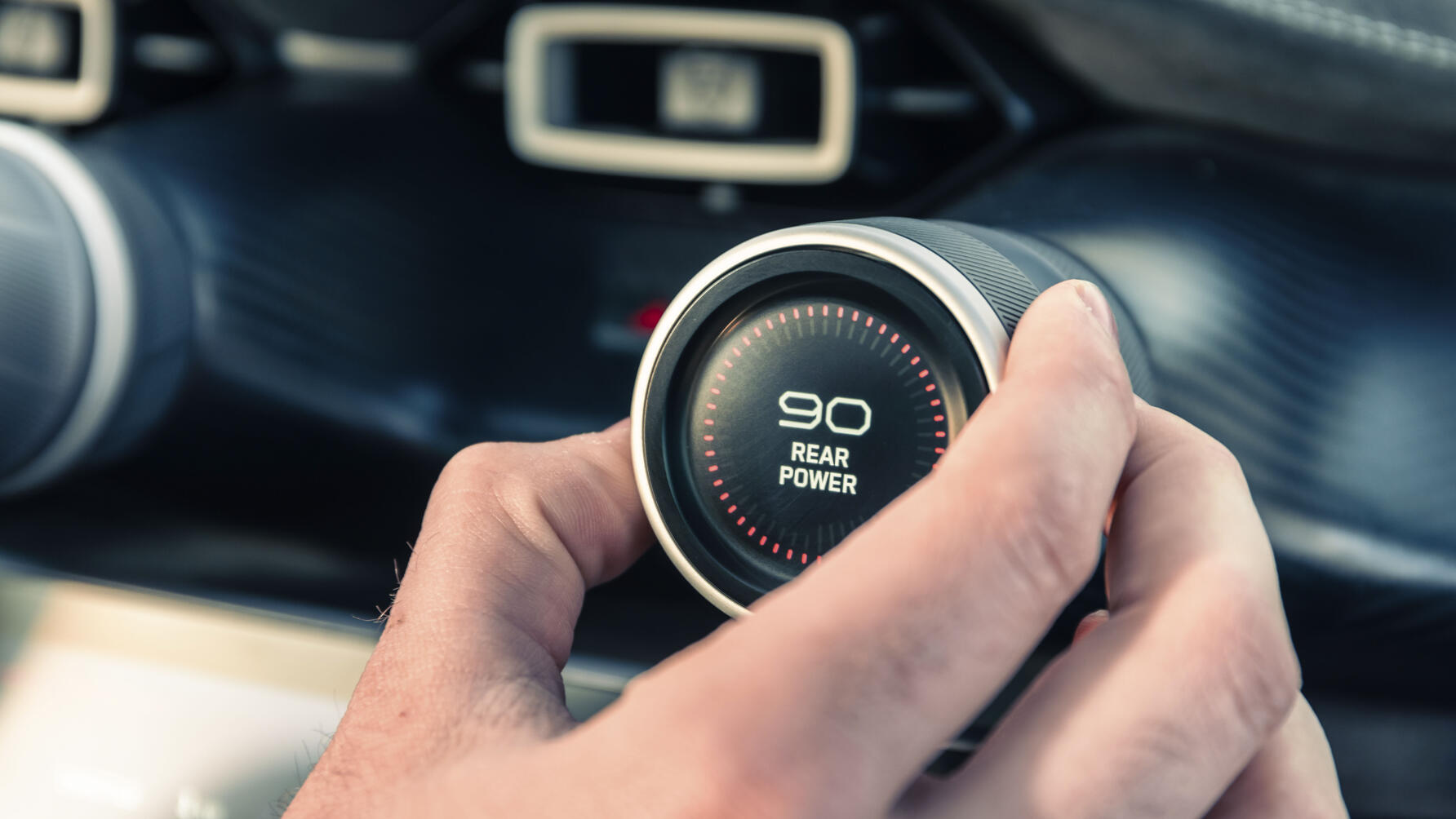
Miro Zrnčević Mrgud, Rimac’s chief test and development driver, consonant enthusiast and basically the George Clooney of oversteer, explains it quite simply by saying that he didn’t want the car to “just end up handling and performing like a hammer”. That it needed subtlety and usability. He wants the car to perform at 2mph and 200 if it’s going to satisfy Mate Rimac. And that’s the breadth that will always need work – power isn’t a problem, control is always going to be the issue. You could make the car completely unreactive with dynamic paranoia, tie the systems down so hard that the Nevera would feel like a roller coaster at Disney World – fast, lightly thrilling, but with all the feedback of a thrown brick. What Miro is doing is trying to find that balance between feedback and fear, balance the profit of tactility against loss of control.
After three days, opinions are formed. To be completely honest, I don’t think the Nevera is a pretty car. It’s imposing and special, but from certain angles, it can look a touch overstated. In fact, I think it looks slicker with the wing in its retracted position. But whatever your opinion on the styling, it’s a deeply, wonderfully impressive masterclass, possibly more so when not in its natural habitat. The mistake here is to look at the headlines and think that there’s all there is. There’s more nuance than you imagine.
Top Gear
Newsletter
Thank you for subscribing to our newsletter. Look out for your regular round-up of news, reviews and offers in your inbox.
Get all the latest news, reviews and exclusives, direct to your inbox.
MY STOMACH STARTS TO WRAP UNKINDLY AROUND MY SPINE
The more time you spend with a car like this, the more you discover. The truth is that the bare stats for electric hypercars almost feel like clickbait, strings of ludicrous numbers that somehow seem to carve up the remaining physics left to combustion engines, and leave them literally gasping. Megacars that suck the soul from the experience, and deliver effect rather than emotion. But don’t forget, they said the same about digital photography versus film. They said the same about the death of vinyl. But people still take incredible pictures. People still make music. And that’s the thing; people will still make electric hypercars. They might be motivated by a powertrain that absolutely has less quirk and idiosyncrasy than we’re used to, but they’re designed and built by people who still love driving. The photographer still frames the shot. The musician still plays the instrument. I don’t think cars like the Nevera are even directly comparable to a combustion-engined hypercar except in the barest sense of being exotic. They are a new and different breed. The Nevera – at this point – is the pinnacle.
And when it comes to what it’s like to drive a car with getting on for 2,000bhp on sheet ice without studs, all I can say is, it’s just as exceptional as you imagine. And as for how you do it... well, you do it very bloody carefully.
Trending this week
- Car Review
BMW iX3







